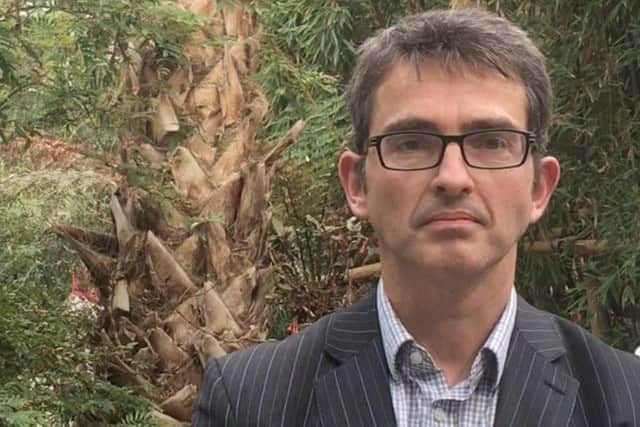Sheffield health chief blames ‘London-centric’ approach for north’s Covid-19 infection rate
and live on Freeview channel 276
South Yorkshire’s rising Covid-19 infection rates mean the region is now under Tier 3 lockdown, with pubs not serving substantial meals forced to close, households banned from mixing in private gardens, and people advised to avoid travelling into and out of the area.
It has joined Greater Manchester, Lancashire and Liverpool in having the toughest restrictions imposed, with much higher rates of infection across the north than in London and elsewhere in southern England.


Advertisement
Hide AdAdvertisement
Hide AdSheffield’s director of public health, Greg Fell, has now shared his views on the stark north/south divide when it comes to the spread of coronavirus.
In a long thread on Twitter, he claimed there was no single answer but the timing of the lockdown being eased, poorer performance on contact tracing in the north, and more northerners working in jobs that can’t be done remotely probably all played a part.
He said London had the earlier peak in infection but cases had reduced to a lower level than elsewhere in the country, particularly the north, by the time lockdown measures were eased in June.
"Easy to say but government policy seems London / SE centric (obviously) thus when lockdown released (there was) higher residual infection (and a bit lower illness induced immunity – 10% vs c6% - but that probably was not a dealbreaker) in the north,” he wrote.
Advertisement
Hide AdAdvertisement
Hide AdHe continued: “My guess is poorer performance on contact tracing (I've not done the analysis on that) in north vs south
“Also contributing to speedier take off is the mix is different economy and workforce structure. In general, the jobs that can’t be done remotely are lower paid (and more prevalent in the north), so again the most deprived/BAME/young people are impacted the most.”
Mr Fell highlighted research by the Centre for Cities think tank, which found that less than 40 per cent of people are able to work from home in Sheffield and elsewhere in the north, compared with around 60 per cent in London.
He said this meant there was likely to be poorer adherence to isolation due to ‘financial issues’ in the north, rather than ‘inherent’ differences between the north and south in compliance with the Government’s rules.
Advertisement
Hide AdAdvertisement
Hide AdSumming up, he said the vastly different infection rates ‘can be explained by underpinning epidemiology, London centric policy making, structural factors in the economy and incomplete contact tracing and isolation’.
He added: “Yet now we have - for understandable and valid reasons - suppression interventions that will exacerbate geographic economic inequality.”
As for what can be done to bring the rates down, he said more public health staff were needed to help identify and manage clusters, and the test and trace system must be improved as it ‘doesn’t work fast enough or have complete reach and depth’.
He also pointed to figures showing only 20 per cent of people who should be isolating do so fully, with some ‘wilfully’ ignoring the requirement but others unable to do so for financial reasons.
And he claimed the best way to increase that percentage is not through enforcement but to ‘enable and give people who feel they don’t have choice some choice’.